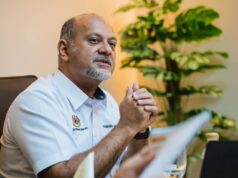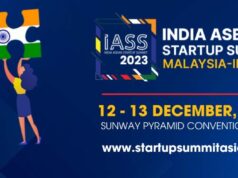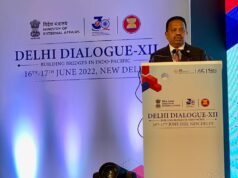 Bangkok (dpa) – The ASEAN Economic Community (AEC) was scheduled to set up a free-trade bloc by the end of 2015 to rival the European Union or the United States, under a 2007 roadmap.
Bangkok (dpa) – The ASEAN Economic Community (AEC) was scheduled to set up a free-trade bloc by the end of 2015 to rival the European Union or the United States, under a 2007 roadmap.
“December 31, 2015 will not see ASEAN achieving all its AEC targets,” says Jayant Menon, the lead economist at the Asian Development Bank.
A web of trade deals has ensured more than 70 per cent of intra-ASEAN trade is tariff-free in principle, with most of the remainder subject to relatively low tariffs. Less than 5 per cent of trade within the bloc carries tariffs higher than 10 per cent of value.
But persistent non-tariff barriers remain the “single biggest obstacle” to free trade, says Ruth Banomyong, director of the Centre for Logistics Research at Thammasat University in Bangkok.
For example, some countries apply more thorough customs inspections on agricultural goods, he says, increasing delays – and costs – of imports. “These are trade barriers by the back door,” he says.
Rolf-Dieter Daniel, president of European Association for Business and Commerce (EABC), agrees. “Sure, export and import will probably get a bit easier, but the tariffs that have been cut are replaced now by non-tariff barriers.”
The barriers, resulting from a combination of protectionism and poor planning, are holding back the AEC from exploiting its potential, experts say.
Combined, ASEAN’s 10 countries would be the seventh-largest economy in the world with a combined gross domestic product of 2.4 trillion US dollars and home to world’s third-largest work force.
With a population of 600 million, the bloc also represents a market with a larger number of potential customers than the EU or North America, according to the Asian Development Bank.
“AEC was a chance to take ASEAN to the next level, as a manufacturing hub also as a competitor to China, but it did not happen,” says “ASEAN countries are still competing amongst each other – that thinking has to be erased.”
Businesses are not fully behind the project either. According to a survey, “only 7 per cent of respondents reported having detailed knowledge of AEC initiatives,” says ADB’s Menon. “There are estimates that less than a fifth of ASEAN businesses have made any plans for the end of 2015.”
But even if the deadline is missed, the AEC is still worth pursuing, the experts say, including Menon.
“Overall the AEC has been a net positive,” Ruth says. “There are things that need to be sorted out and it will take time. It is a gradual incremental process.”










